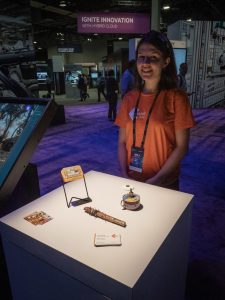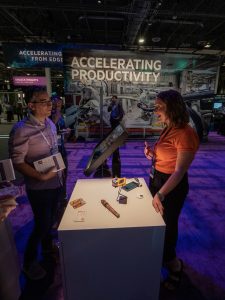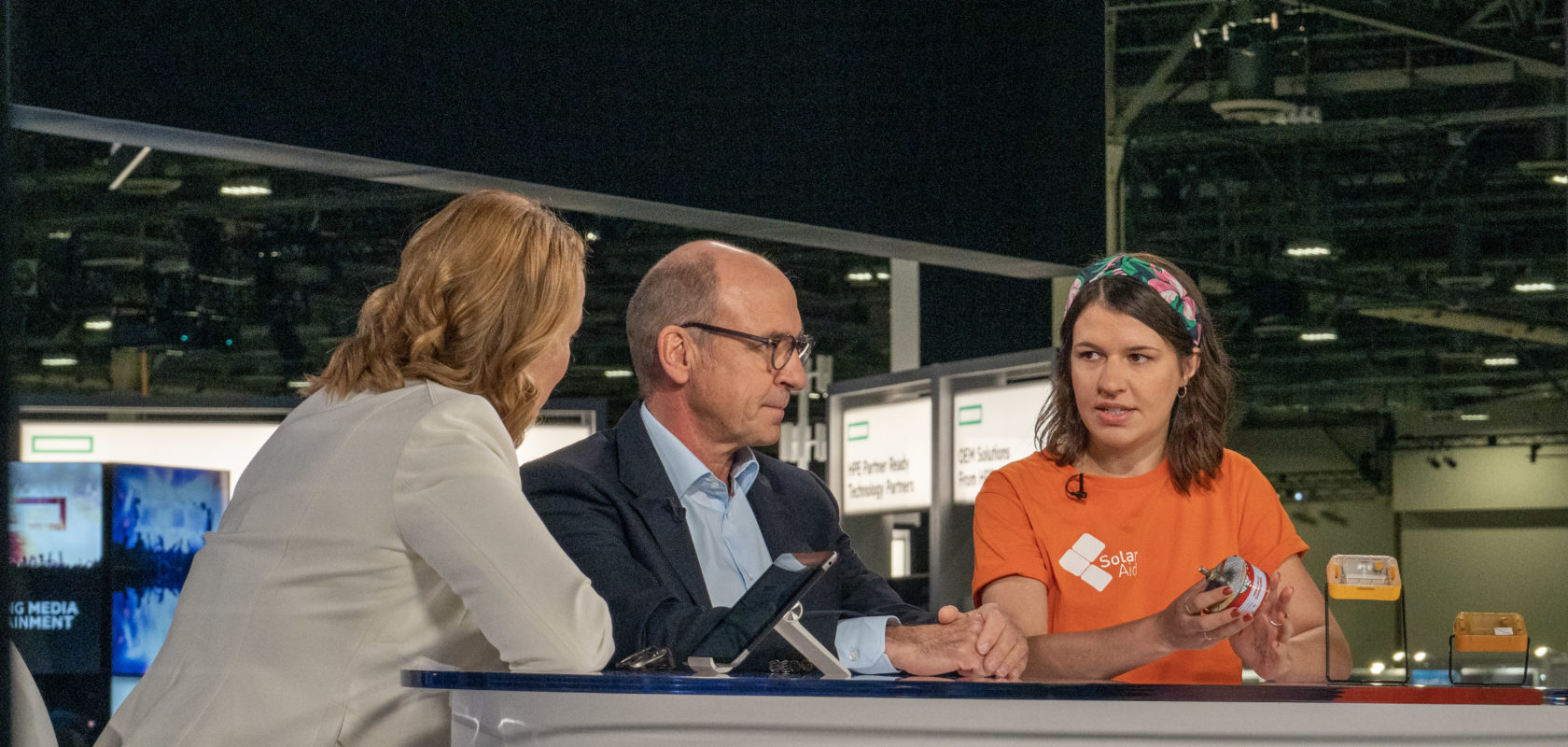In November last year, SolarAid attended Hewlett Packard Enterprise (HPE) Discover 2018 in Madrid – an exhibition showcasing the latest technology for business and IT professionals. Here, a human-sized robot packed 1,500 of our SM100 solar lights to be sent off to three projects in Zambia.
HPE was pleased with its success and so invited SolarAid to their flagship event – HPE Discover 2019 in Las Vegas. SolarAid’s Emily Bellis and Jen Woolridge share their experiences from a week in the city of light raising awareness about people living without electricity.
___________________________________________________________________________________________________________
 When I attended the exhibition in November it felt strange for SolarAid to be sandwiched between a life-size replica of a space station module and a top of the range Formula 1 car.
When I attended the exhibition in November it felt strange for SolarAid to be sandwiched between a life-size replica of a space station module and a top of the range Formula 1 car.
Surrounded by the latest technology for space exploration, high-speed racing and artificial intelligence, we were raising awareness of how something as simple as a solar light can be transformational to a rural African family. When I attended the exhibition in November it felt strange for Solaraid to be sandwiched between a life-size replica of a space station module and a top of the range Formula 1 car.
This time around, it was even stranger! Walking down the Las Vegas strip at night you can’t help but notice that the city consumes a tremendous amount of power. Many of the vast hotels house windowless shopping centres, restaurants and casinos that are brightly lit 24/7.
Armed with SM100 solar lights and kerosene lamps, Jen and I had an important mission to do in this city – to raise awareness of the 600 million people across Africa left in the dark, says Emily Bellis, Development Officer at SolarAid.
____________________________________________________________________________________________________________
 When I initially started at SolarAid just under two months ago, what struck me the most was just how tangible the cause is. 600 million people are living in sub-Saharan Africa without access to electricity – wow, what?! How can that be the case in the 21st Century?”
When I initially started at SolarAid just under two months ago, what struck me the most was just how tangible the cause is. 600 million people are living in sub-Saharan Africa without access to electricity – wow, what?! How can that be the case in the 21st Century?”
We showed a homemade torch made out of split bamboo and batteries – a kerosene lamp made out of an old tomato can. Materials we perhaps use every day, but for entirely different reasons. These real-life examples brought our mission to life.Turns out, I’m not the only one shocked by this number. When I attended HPE Discover we were there to talk about our SM100 solar lights in the context of expanding technologies, about how we got to the product we have today. But how could we start with the how without the why?
What I am taking with me from the event are people’s reactions to what SolarAid is doing. We were touched and thrilled that HPE’s CEO Antonio Neri started his two-hour keynote speech talking about our organisation. He spoke about the urgency and the need, and how technology can help bridge that gap. This acted as further engagement for when people came to speak to us on the stand – I won’t forget the sheer bewilderment over the number 600 million. ‘600 million people? But that’s an eighth of the world’s population! How can that be? We just aren’t doing enough!’ We couldn’t agree more, says Jen Woolridge, Corporate Manager at SolarAid.
____________________________________________________________________________________________________________
At such a huge event showcasing the latest technology, held in a city famous for glittering lights and bright neon signs it’s easy to forget that something that for us is as easy as flicking a switch, is a dangerous and daily struggle for families in rural Africa.
But this served to make our message stronger, it was a good platform to spread the SolarAid story. We are grateful to HPE for pledging to fund the distribution of 5,000 solar lights in rural Africa and look forward to developing this partnership with HPE and other attendees. Because together, we are much closer to ensuring that by 2030, no one is left in the dark.
